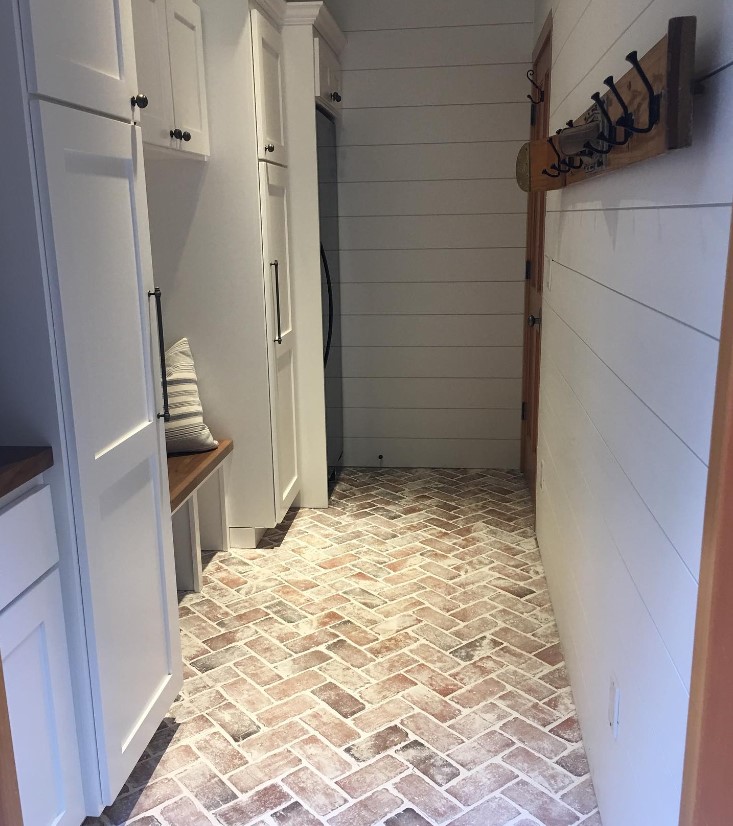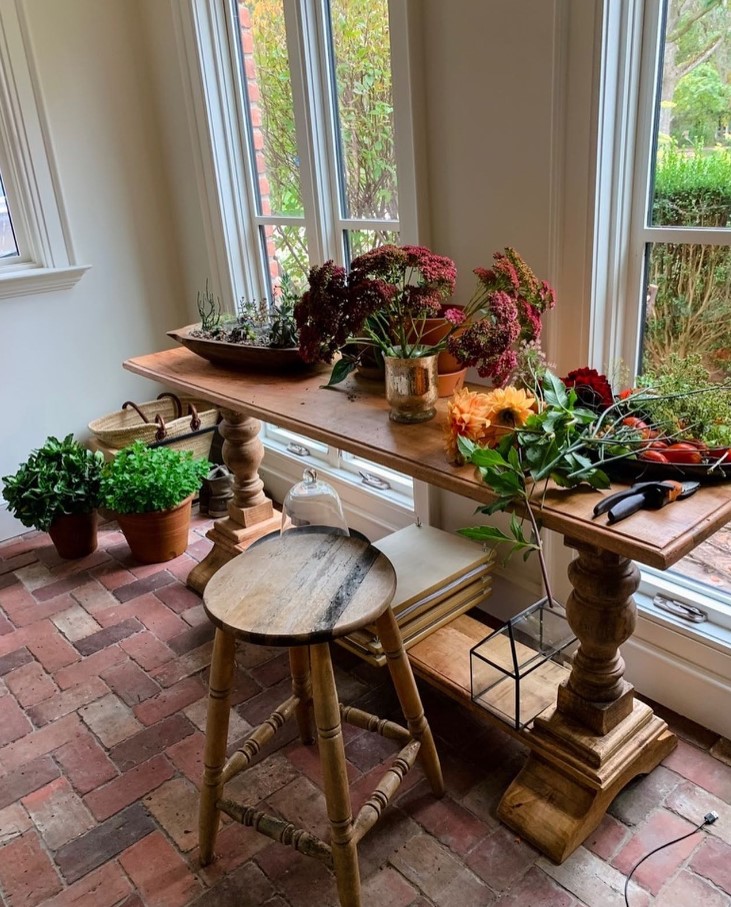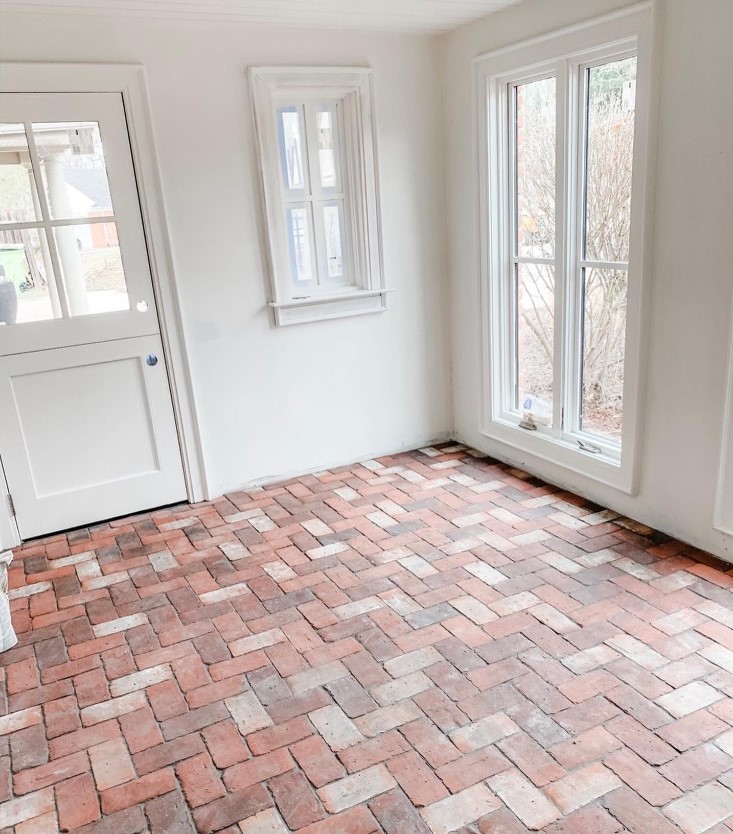
Brick tiles are an exceptional choice for home interiors, bringing flexibility to fit both rustic and modern styles. Their earthy tones and rough texture make them ideal for rustic designs, while their sleek arrangement can transform a space into a modern haven.
Here is a comprehensive guide on making brick tiles work in both styles.
Why Brick Tiles Work for Both Rustic and Modern Interiors?
Brick tiles have a natural and timeless quality that makes them adaptable. Their durability and easy maintenance only add to their appeal. Whether aiming for a cozy, rustic feel or a minimalist, modern space, brick tiles provide the perfect canvas.
However, finding the right brick tiles is crucial. You should always choose reliable and well-known manufacturers like realthinbrick.com
Brick Tiles in Rustic Interior Design
View this post on Instagram
Rustic interiors are known for their comfort, warmth, and use of natural materials. Brick tiles fit seamlessly into this look and can elevate any room with their rugged charm.
1. Exposed Brick Walls for a Natural Aesthetic
Exposed brick walls make a powerful statement in rustic interiors. They add character and a sense of history to any space. Consider using brick tiles for a feature wall in your living room or bedroom. Opt for tiles in warm red or earthy brown hues to enhance the rustic appeal. The imperfections and texture of brick create a lived-in, authentic feel.
Tips for highlighting exposed brick:
- Position an exposed brick wall behind the bed to add a focal point in the bedroom.
- In a living room, consider using brick tiles around the fireplace for a central feature.
2. Combining Brick with Wood
Brick and wood are a classic combination that defines rustic design. Whether it is wooden beams, reclaimed wood furniture, or hardwood floors, the warmth of wood complements the rugged look of brick tiles.
Ideas for combining brick and wood:
- Use reclaimed wood shelving against a brick wall for added storage and style.
- Incorporate wood countertops in the kitchen to create a cohesive rustic theme.
3. Sticking to Earthy and Neutral Tones
A neutral color palette enhances the natural beauty of brick tiles. Shades of brown, beige, olive, and terracotta work well in rustic interiors, providing a harmonious look that feels grounded and warm.
Color combinations to try:
- Pair warm brick tones with olive green accents to bring a touch of nature indoors.
- Use beige or cream-colored furniture to balance the depth of the brick.

4. Keeping a Natural, Unpolished Look
Rustic interiors thrive on imperfections. Choose brick tiles with a matte or rough finish to keep the natural, unfinished appearance. Avoid glossy finishes, as they do not align with the rustic aesthetic.
How to maintain the look:
- Use a matte sealant to protect the brick without altering its texture.
- Keep accessories simple and organic to complement the ruggedness of the brick.
5. Using Soft Decor to Balance the Roughness
To soften the look of brick tiles, incorporate cozy elements like plush rugs, wool throws, and cushioned seating. This contrast creates a warm and inviting atmosphere.
Decor ideas for a rustic space:
- Place a woven rug on hardwood floors to add texture and warmth.
- Use oversized cushions and soft lighting to create a cozy ambiance.
Brick Tiles in Modern Interior Design

Modern interiors focus on clean lines, simplicity, and functionality. Brick tiles can add texture and warmth to an otherwise minimalist space. The key is in how they are arranged and styled.
6. Choosing a Minimalist Layout
For a modern look, keep the layout of the brick tiles simple. Avoid intricate patterns and opt for clean, horizontal or vertical lines. White or gray brick tiles are perfect for maintaining a streamlined and elegant aesthetic.
Simple layout ideas:
- Use a stacked bond pattern for a sleek and organized look.
- Consider a monochromatic color scheme with white or gray tiles.
7. Pairing Brick with Contemporary Materials
Brick tiles can add warmth to modern spaces when paired with sleek materials like glass, metal, or polished concrete. This combination creates a balanced look that feels stylish yet inviting.
Material pairing suggestions:
- Stainless steel appliances contrast beautifully with a brick backsplash.
- Polished concrete floors and brick walls add an industrial yet modern feel.
8. Using Monochromatic Color Schemes
Modern design often uses a limited color palette. Brick tiles in neutral shades like white, gray, or black work well in these spaces, adding texture while keeping the overall design cohesive.
- Pair white brick tiles with black fixtures for a bold, modern look.
- Use gray brick tiles with soft beige furniture to create a calming atmosphere.

9. Enhancing the Space with Lighting
Strategic lighting can transform the look of brick tiles in a modern setting. Use recessed lighting, LED strips, or pendant lights to highlight the texture of the brick and add dimension to the room.
Lighting tips:
- Install LED strips under cabinets to illuminate a brick backsplash.
- Use pendant lights in a dining area to create a focal point.
10. Keeping Accessories Minimal
In modern interiors, less is more. Keep accessories to a minimum and focus on pieces that serve a functional purpose. The simplicity of modern decor allows the texture of the brick tiles to shine.
Minimal accessory ideas:
- Use simple, abstract artwork to add interest without cluttering the space.
- Choose sleek, functional furniture that complements the clean lines of the brick.
Blending Rustic and Modern Styles
Combining rustic and modern elements can create a unique and balanced interior. Brick tiles serve as a perfect bridge between the two styles, adding warmth to a modern space or a contemporary edge to a rustic one.
11. Creating a Focal Point with Brick
A brick wall can act as a focal point in a mixed-style room, tying together rustic and modern elements. Use brick tiles around a fireplace or as an accent wall to anchor the space.
Focal point ideas:
- In an open-plan living area, use a brick wall to define the dining space.
- Add a brick backsplash in a modern kitchen to bring warmth and texture.

12. Layering Different Textures
Combining various textures adds depth to a room. Mix the rough texture of brick tiles with soft fabrics, smooth metals, and polished wood to achieve a well-rounded design.
Texture layering ideas:
- Use velvet cushions on a sleek leather sofa to contrast the rough brick wall.
- Add metal shelving to a brick wall for a touch of industrial chic.
13. Mixing Patterns Thoughtfully
While modern design often avoids patterns, you can introduce subtle patterns to add interest without overwhelming the space. Consider using a simple herringbone layout for the brick tiles in a transitional space.
Pattern ideas:
- A herringbone brick floor can add a touch of elegance to a rustic-meets-modern kitchen.
- Use a basketweave pattern in small areas like a hallway for added texture.
Practical Considerations for Using Brick Tiles
Before committing to brick tiles, consider practical factors like sealing, maintenance, and cost.
14. Sealing for Easy Maintenance
Brick tiles need proper sealing to prevent stains and damage. A good sealant will also make them easier to clean, especially in high-traffic areas like the kitchen.
Sealing tips:
- Reseal the tiles every few years to keep them protected.
- Use a matte finish to maintain a natural look in rustic spaces.

15. Understanding Installation and Cost
Brick tiles are more cost-effective and easier to install than full bricks. They can be applied to most surfaces, making them suitable for DIY projects or professional renovations.
Installation tips:
- Prepare the surface well to ensure the tiles adhere properly.
- Consult a professional if you are unsure about the installation process.
Final Thoughts
Brick tiles are a versatile and timeless choice for interior design. They add warmth and character to rustic spaces while providing texture and contrast in modern rooms. By carefully considering layout, color, and material combinations, you can create a stunning interior that balances both styles.
